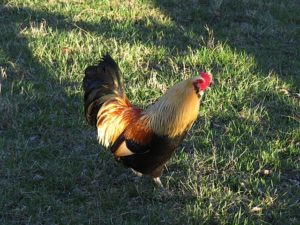
Estimates are in on the cost of treating our ash trees against the emerald ash borer. According to Deborah who received an estimate from Mike Henrietta, a landscaper, the cost for treating the two trees that shade the two recently-installed memorials are as follows:
Colony Drive Bench Tree – $429;
Pasturegate Road Gazebo Tree – $312.
Sub-total: $741.
Total: $370.50 (with funding through the the Virginia Forestry half-cost share program).
Mike advises that the trees may need to be treated every 2-3 years for about ten years. The emerald ash borer comes through in a wave, killing all ash trees and then dying out for lack of a food source. At that point landowners may be able to stop treating the trees and monitor them only. Also, less costly treatments are in development, hopefully reducing future costs for treatment.
Meanwhile, the emerald ash borer (EAB) is apparently already in the area. Damage can be seen in the Shenandoah National Forest, as evidenced in the photo above. This trunk from a felled ash tree along the Hazel Falls Trail in Shenandoah shows the tell-tale s-shaped galleries left in the wake of an EAB infestation.
A number of ash trees on the farm are showing signs of the pestilence as well, one of the first signs being a loss of crown. There are three large ash trees that circle the old chestnut barn whose crowns are becoming bare. Groves of smaller ash trees scattered about the farm are showing signs of stress as well. Soon gaps will open up allowing more sunshine onto the forest floor changing the landscape and the ecosystem, which is made up of a variety of birds, insects, and butterflies that live off of the ash trees. The new landscape will invite non-native species, so care must be taken as to what is allowed to grow in the new open spaces.
Some communities are planting new trees to replace any lost ash trees with species like red maple, red oak, tulip trees, bur oak and silver maple to help fill in the lost tree canopy.
If you can’t beat ‘em, join ‘em, as they say. The way things are going, there will be ample ash wood available on the farm from the trees lost to the EAB. Ash wood has a variety of uses and thoughts should turn to how to utilize the ash wood of trees lost to the invasive insect.
There are several ways to utilize the wood from trees that need to be removed, according to an article, “My Ash Tree is Dead…Now What Do I Do?” from the Michigan State University Extension Bulletin E-2940, excerpted here.
Firewood: Wood from trees killed by the emerald ash borer can still be used for firewood at the location where the trees were removed, although they should not be transported to other locations. For more information about the laws and quarantine regarding firewood movement, please contact your county extension office. Ash is considered one of the best woods for a steady fire and good heat. Ash burns better when seasoned, but will burn when green.
Lumber: Many local mill operators can bring a portable sawmill directly to your home, allowing your removed trees to be converted into lumber that you can use for a variety of projects. Milling is especially suited to trees killed by the emerald ash borer because the insect does not damage the interior portion of the wood when it kills the tree. Ash wood has many redeeming qualities and often makes a good substitute for oak. It can be made into many beautiful and durable products, including furniture, flooring, paneling and molding. Portable sawmill operations generally charge by the hour or by the total board feet of lumber produced. Lists of local sawmill operations can be obtained at your county extension office or from your county’s conservation district forester.
Landscaping materials: Dead landscape trees can still bring beauty and structure to your yard. You can easily have them milled to become landscape timbers or chip them to create mulch or compost for gardening and home landscaping projects.
Art and furniture: If the tree has special significance for your family, you may want to consider hiring a woodworker or chainsaw carver to create a piece of art or furniture from the wood. Many people, devastated by the death of a beloved landscape tree, have managed to create treasured family heirlooms in this way. Organizations such as woodturners’ associations, chainsaw carvers’ guilds or a woodworkers’ guilds can be good resources for finding a suitable craftsperson.
There is not much else we can do beyond saving the few trees we believe are worth the cost of saving, perhaps, and utilize the wood from the dead and dying trees we are not able to save. Choices will need to be made as the changes come upon us.
Resource for this article:

